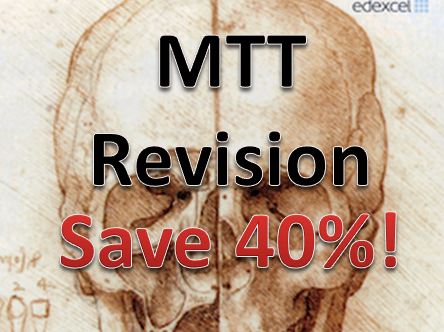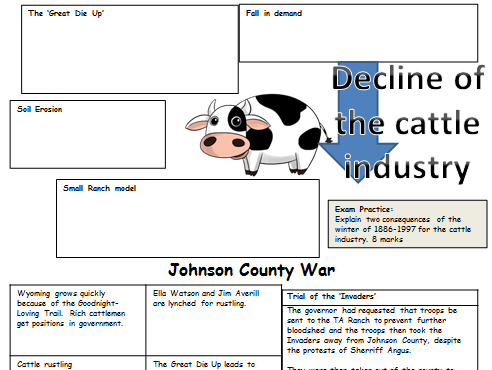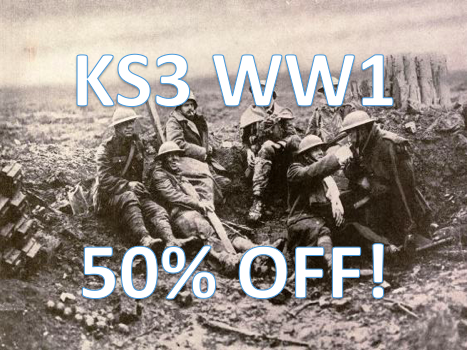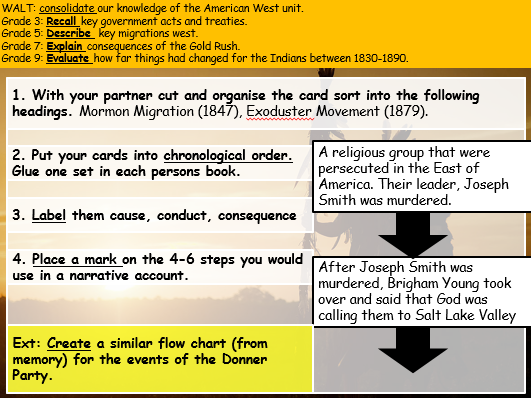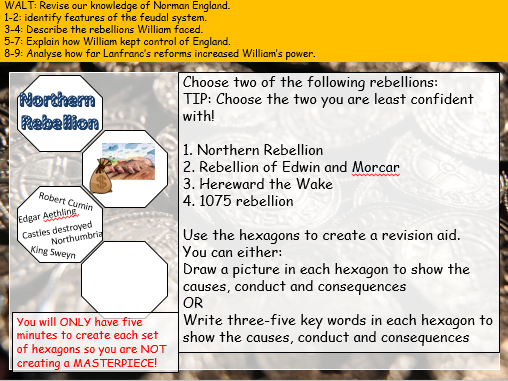
177Uploads
71k+Views
23k+Downloads
All resources

Anglo-Saxon and Norman England key words (Edexcel 9-1)
two page document with key words for the unit on it - in line with Edexcel 9-1.
I went through the Pearson textbook and included all of the key words from front to back of the textbook.

Early Government Acts (American West (Edexcel history 9-1))
Indian Appropriation Act
Indian Removal Act
Indian Trade and Intercourse act
All explored in detail within the lesson.
Homework included (narrative account of early government actions)

Edexcel 9-1 history command word descriptors
Examination command words created to support pupils with understanding expectations of all three papers.
Bundle

Key words bundle Edexcel history 9-1
Key words for the following units included:
Medicine Through Time
Historic Environment
Anglo-Saxon and Norman England
American West
Weimar and Nazi Germany

Medicine Through Time Overview Revision HW Edexcel History 9-1
This homework/revision activity is aimed at getting pupils to consider all of the content they have learnt over the course and get it onto one sheet. They then colour code progress, stagnation and regression to support with the explain why and how far do you agree questions. On the back of the sheet is a WAGOLL, instructions and some example questions for pupils to use to support their revision.
Aimed for use with the purple revision guides (pearson) but can be easily adapted for pupils to do from memory, or other revision guides that your school are using.

Poverty in Tudor England
Lesson aimed at KS3, poverty and the poor laws in Tudor England.
describe why people were in poverty
Define the terms able-bodied and impotent poor
Explain how these people were treated and why these categories were necessary at the time.
evaluate how fair these categories were and why.
Bundle

Medicine Through Time Revision Bundle
Five sessions that cover revision for the Medicine Through Time unit.
Each session comes with a worksheet for pupils to create that they can take home to revise from.
Sessions include:
Medieval medicine 1250-1500
Renaissance medicine 1500-1700
Early Modern medicine 1700-1900
Modern medicine 1900-2000
WW1 Medicine in the trenches (Historic environment) 1914-1918

Cattle Industry (Rise and Decline): REVISION American West
Part of a series of revision sessions that provide pupils with an overview of the American West unit prior to examination.
As part of this revision session pupils will revise:
Changing role of the Cowboy
Rise of cattle industry and key individuals
Decline of the cattle industry
Johnson County War: Causes, conduct, consequences
Possible examination questions
Bundle

KS3 WW1 bundle
Four lessons that introduce KS3 pupils to WW1 whilst building skills towards KS4. Focus on analysis, evaluation and source work throughout the scheme of work.
Pupils will be introduced to propaganda as well as contemporary evidence from the period.

Elizabethan England: Who should marry Elizabeth I?
Suitors lesson in which pupils study ‘dating profiles’ before creating a speech to deliver to a ‘real life’ Elizabeth in a hot seat style activity. Pupils can then vote on who is the most convincing match or the pupil pretending to be Elizabeth can choose.
Pupils will explore reasons why Elizabeth didn’t want to marry and why her advisors pressured her to do so as well as exploring who wanted to marry her and why.
All tasks fully differentiated for LA, MA and HA.

Elizabethan England: What caused the Spanish Armada? (Skills lesson)
This skills lesson is aimed to encouraged independent extended writing - pupils examine the causes of the armada before reading and annotating a WAGOLL that demonstrates how to reach level 7 at KS3. They then create their own piece analysing the reasons Philip launched the Armada.
WALT: Explain why Phillip launched the Armada
Level 3: identify more than one cause of the Spanish Armada.
Level 4: describe each cause in detail.
Level 5: Explain why each cause upset Phillip enough for him to launch his Armada.
Level 6-7: Evaluate the importance of causes to reach a judgement.

Edward the Confessor (Edexcel 9-1: Anglo-Saxon and Norman England)
This lesson is designed as a skills building case study to help introduce the Normans unit.
Pupils will be introduced to life in Saxon England and the power of the house of Godwin.
They will build towards answering a how useful question to embed paper one and paper three skills.
Gives later opportunity to compare when analysing the control of William. Edward didn’t raise taxes or take land from the earls, so a good link to allow pupils to understand why Saxons were so upset and angry following 1066.

The Power of the Godwin Family and Normandy Embassy (Anglo-Saxon and Norman England (Edexcel 9-1))
WALT: Evaluate the power of the Godwin family.
2-3: Recall key facts about the Godwin family.
4-5: Describe the importance and power of the Godwins in England.
6-7: Explain what happened during Harold’s embassy to Normandy and why it might cause problems.
8-9*: analyse how useful Norman sources are to a historian.
Pupils examine the power of the Godwins and how their influence both helped and hindered Edward’s rule
They then explore the Normandy embassy using the Bayeux tapestry and the Norman and Saxon interpretation of the event.

End of unit consolidation, mock, and improvement lesson (Edexcel History American West 9-1)
Consolidation:
Pupils will match up key acts and treaties as a quick recall activity
Then they will create two narrative account timelines for Mormon and Exoduster movements.
Consider consequences of the Gold Rush before explaining in detail why each feature of the Boom Towns lead to law and order problems.
Finally, pupils will evaluate how far things had changed for the Indians using acts and treaties to explain whether there were any significant turning points.
Mock attached, follows next lesson.

I'm a Historian! Ice Mummies Investigation (What is history? (KS3))
This lesson is set up as a pupil led investigation, pupils explore the ‘cave’ to find as much evidence as possible before they run out of time. They then have to use they evidence they have been able to collect to work out what has happened to the Mayan ice mummmy - this lesson is part of a series of lessons that build upon use of sources, interpretations and finally a baseline assessment. These can be found separately or as part of a bundle in my tes shop.
WALT: Investigate the mystery of the ice mummies to come to a conclusion.
L3: identify questions historians need to ask in order to learn about the past.
L4-5: describe key features of the ice mummies and explain what you can learn about the ice mummies from the sources and what clues might mean.
L6: hypothesise what might have happened to the ice mummies.
L6: Create a narrative account analysing the experiences of the Ice Maiden and how she felt.

Source utility (What is history? (KS3))
This lesson builds on knowledge gained during the BIAS (WHAT IS HISTORY (KS3)) lesson which is available in my TES shop.
WALT: use sources to explore Mayan culture and explain how they are useful to a historian.
L3: Recall key facts we learnt last lesson about the Mayans.
L4: describe two things you can infer from a source.
L5: explain why sources written by the Spanish are limited to a historian.
L6: Evaluate sources written by the Spanish to explain why they are useful as well as limited.
Pupils use sources to develop skills to analyse utility. Pupils are provided by WAGOLLs and heavy support to enable them to access the skill - worksheets are available for LA, MA and HA.

End of Unit Consolidation (Edexcel 9-1: Anglo-Saxon and Norman England)
This lesson has been designed to be delivered at the end of the unit prior to assessment.
My class has a range of pupils targeted from grade 2-9, therefore my lessons are differentiated with this in mind at all times.
Pupils:
identify features of the feudal system through a starter activity
Describe the rebellions William faced (video and then hexagon revision activity)
Explain how William kept control of England (fully differentiated table, method of control and how it helped him keep control)
Analyse how far Lanfranc’s reforms increased William’s power (colour coding task, differentiated challenge for grade 4-6 and grade 7-9)
Bundle

What is History? KS3 introduction to history
This scheme of work has been created to introduce and embed historical skills across KS3.
Pupils explore key concepts such as chronology, bias, and interpretations before conducting their own investigation over a series of six lessons.
The seventh lesson of the series can be used as a baseline assessment and is in line with the interpretation skills included in Paper 3 (edexcel 9-1).

Baseline Assessment (What is history? (KS3))
This baseline assessment follows the conclusion of the ‘What is history’ scheme of work that can be found in my tes shop. It is set up to mimic the question types of Paper 3 Edexcel 9-1.
This assessment includes all interpretation type questions - 3b, 3c, 3d.
Bundle

Edexcel 9-1: Anglo-Saxon and Norman England
A bundle of fully differentiated lessons.
Lessons build into a scheme of work for Paper Two Anglo-Saxon and Norman England.
Pupils are given the opportunity to be supported through effective differentiation every lesson and challenged through tasks ranging up to a grade nine every lesson.
There are a variety of WAGOLLs included to give pupils model answers to work from, all tasks are responded to through AFL and there are several longer written responses included to allow teachers to mark pupils written communication.
I have included some revision sessions (labelled REVISION) as a bonus.







